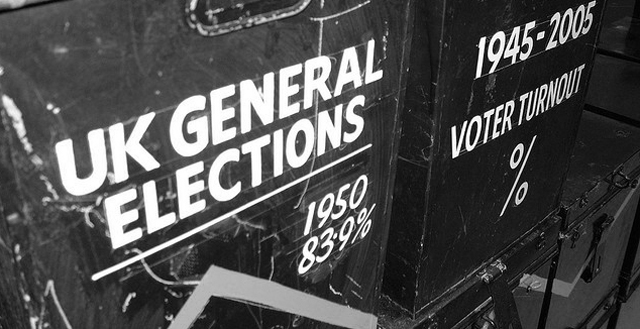The youth vote, grey vote and ‘generational churn’
Young people often get written off in party politics. What’s the point in chasing their support when they don’t vote anyway? Well for Labour, there’s every point. Turning out first-time voters who say they support the party will play a...
Young people often get written off in party politics. What’s the point in chasing their support when they don’t vote anyway? Well for Labour, there’s every point. Turning out first-time voters who say they support the party will play a critical part of securing victory in 2015.
It’s true that lots of young people don’t vote, but those who do lean heavily towards Labour and the polls suggest that close to one third of under-25s will back the party at the next election. With 3.8 million people coming of age between 2010 and 2015 that translates into more than one million Labour votes – or around one in 10 of the total the party needs to win. By contrast, on today’s polls the Conservatives can expect the backing of around 600,000 or 700,000 first-time voters, giving Labour a net gain of 400,000 supporters.
At the other end of the age spectrum, each party will lose voters as people come to the end of their lives. More older people vote Tory than Labour, however, so this effect has a larger impact for the right. Between 2010 and 2015 a projected 2.7 million deaths will lead to a net loss for the Tories compared to Labour of around 100,000 supporters.
So this demographic churn gives Labour a potential advantage of 500,000 votes, compared to 2010, assuming that what people are telling the polls actually comes to pass. Now that we’re half way through the parliament, about half of the effect from demographic churn is ‘priced in’ to the polls and it probably accounts for about one percentage point of the gain Labour had made since 2010. In a tight finish that could make all the difference. But with young people the numbers in opinion polls certainly can’t be taken for granted. Labour will need to tell an optimistic, motivating story to first-time voters and pour huge resources into registering, identifying and mobilising potentially sympathetic young people.
This is not a call for pitting generations against each other, however. A slightly smaller share of older people vote Labour compared to under-25s, but there are vastly more of them out there. The party will probably never lead on the grey vote: as a generation, older people are deeply committed to a social democratic welfare state, but for many this is trumped by cultural and economic conservatism. However, to win in 2015, Labour must still earn something like 3.5 million votes from people aged over-60. The party particularly needs to provide a good reason for older Liberal Democrat supporters to come over to Labour as well as ensuring it hangs on to the support of people who have voted Labour during their working lives as they reach retirement. As Harriet Harman has said many times, the views of older women are particularly important here.
The polls suggest that, so far, Labour is doing enough when it comes to older age groups, but there’s only so much you can read from mid-term polls. Labour needs a message of reassurance and competence, particularly for older people, as well as signalling it offers an optimistic future and genuine alternative for first time voters.
Update:
Since I wrote the article I’ve been worrying that the polls don’t fully reflect the differential in turn-out between young and old (even though young people tell pollsters they ‘don’t know’ or ‘won’t vote’ a lot). So I’ve done the calculations again using the actual turn-out data for 2010. On this basis:
- First time voters: Labour will acquire around 800,000 new voters and the Tories 600,000, so a net gain for Labour of around 200,000 votes
- Deaths: Labour will lose a little over 500,000 voters and the Tories a little less than 700,000, resulting in a net gain to Labour of 170,000 votes
- Total: Ignoring the possibility that Labour might be able to increase turnout among the young, the total effect is a net gain for Labour of 370,000 votes by 2015 which is likely to equate to a swing of a bit over one per cent.
